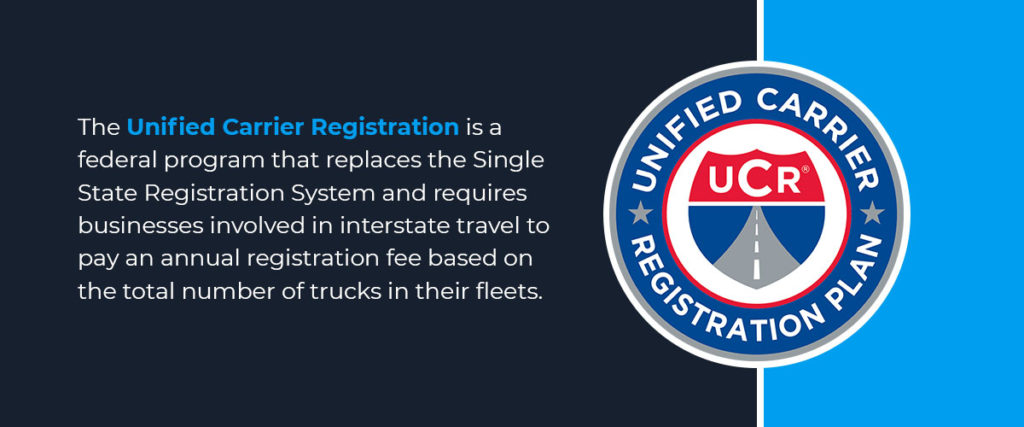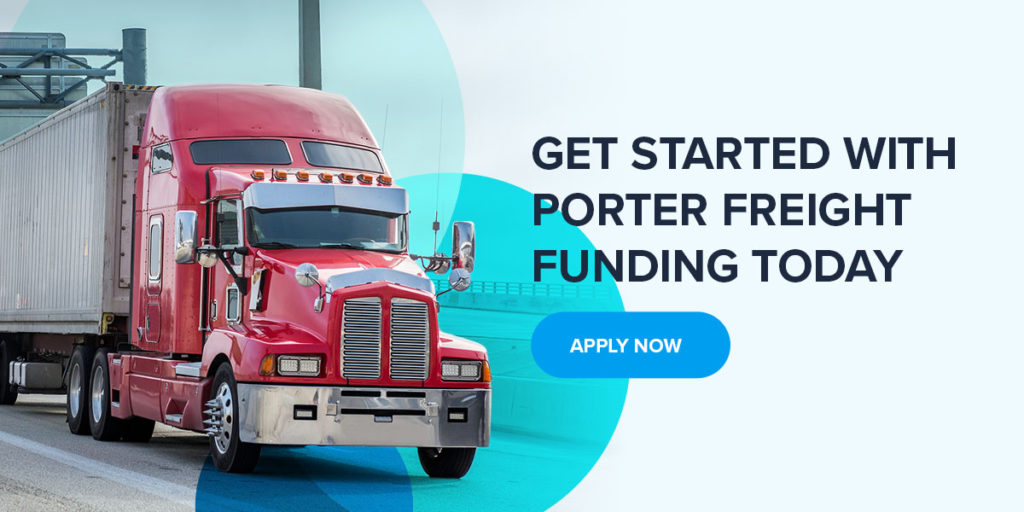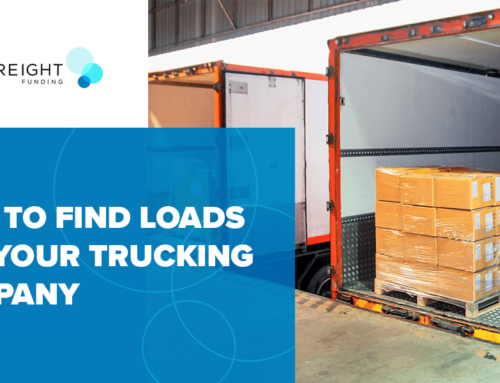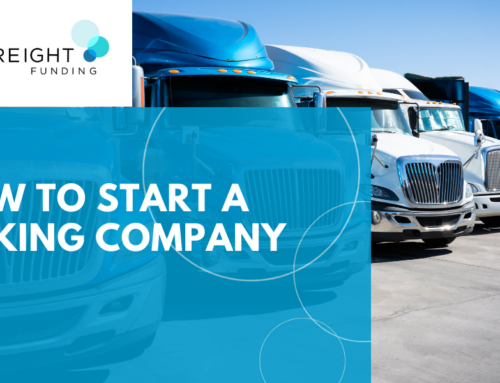How to Create a Trucking Business Plan
A trucking business can be highly profitable, and it helps to have a solid business plan to guide you as you get started on your new venture. A trucking business plan enables you to assess your company’s long-term profitability, obtain the proper licenses and insurance policies, streamline hiring and employee management and attract investors. Learn more about how to create a trucking business plan in our guide.
Jump To Section
What to Do Before Creating a Trucking Business Plan
Here are seven things you need to do before writing a business plan for your trucking company:
1. Register Your Business
There are various ways to register your trucking business in the United States, including registering as a sole proprietor, a limited liability company, a corporation or a partnership. The trucking business structure you select can impact personal liability, taxes, the ability to raise capital and the required paperwork. Be sure to assess your goals thoroughly and choose an option that suits your vision.
2. Apply for an Employer Identification Number
An employer identification number (EIN) is a unique identification code used to identify business entities. The registration is done with the Internal Revenue Service for persons who meet specific criteria, like those who have employees or operate a business as a corporation or partnership. Businesses outside of these categories may also apply for EINs for other purposes like opening bank accounts and doing business with companies that request EINs.
3. Set up an International Fuel Tax Agreement Account
The International Fuel Tax Agreement (IFTA) is an agreement between the 48 contiguous United States states and 10 Canadian provinces to streamline interstate carriers’ fuel use tax reporting.
Qualified persons may obtain an IFTA license, which allows them to travel through the various IFTA jurisdictions and file a single fuel tax return per quarter to their base jurisdiction. The information you may need to open an IFTA account includes the registered business name, mailing address, federal business number and a Department of Transportation (DOT) number.
4. Obtain Your Department of Transportation Number
The Federal Motor Carrier Safety Administration (FMCSA) requires businesses that operate commercial vehicles transporting cargo and passengers in interstate commerce to register with the agency and obtain a DOT number.
The DOT number is a unique identifier when collecting and monitoring a business’s safety information acquired during compliance reviews, audits, crash investigations and inspections. The registration process requires you to provide information such as the state where you operate, the number of trucks you own, the weight of your vehicles and the materials you intend to transport.
5. Apply for a Motor Carrier Number
You may also need to apply for a motor carrier number from the FMCSA to let you transport loads in interstate commerce in exchange for monetary compensation or to deliver hazardous goods. Unlike the DOT number application process, a company may need to obtain multiple operating authorities to support its planned operations. The operating authority determines the type of operation a business may run and the cargo it may carry.
6. Secure Truck Insurance
Getting truck insurance is a necessary business expense and a legal requirement for operating a trucking business. Trucking insurance typically covers bodily injury, medical expenses and property damage.
7. Apply for a Unified Carrier Registration

The Unified Carrier Registration is a federal program that replaces the Single State Registration System and requires businesses involved in interstate travel to pay an annual registration fee based on the total number of trucks in their fleets. The funds collected are generally used to provide supplemental funding for state highway motor carrier registration, safety programs and education.
What to Know Before Writing a Trucking Company Business Plan
It’s always helpful to have business and industry knowledge before creating your truck driving business plan. Your plan will detail essential strategies for operating your business, so it helps to educate yourself in areas such as cash follow, profit and loss and other standard topics in trucking operations. This may require some research and brainstorming. However, the following checklist should help you through the learning process:
- Value your business by assessing the available assets and capital.
- Assess all liabilities and operating expenses.
- Assess how much cash flow you’ll need and the source of your capital.
- Learn the difference between contract market rates and spot markets.
- Learn how to project revenue and manage costs and expenses to determine your profit.
- Learn about the going rates in different freight lanes.
- Know where to find loads.
- Establish operating procedures for different types of freight, including their pick-up and drop-off logistics, the cargo’s origin and destination and the load you intend to haul.
- Determine whether you’ll add fuel surcharges to your rates and evaluate the pros and cons.
How to Create a Trucking Business Plan
With everything else in order, you’re ready to craft your trucking business plan. Here are nine tips on how to write a trucking business plan:
1. Write an Executive Summary
An executive summary is a brief overview of your company. It details the kind of business and operations your entity is involved in, your goals and your plans for the future. The executive summary also offers the opportunity to showcase what sets your business apart from the competition and gives readers an excellent first impression. Generally, keeping it brief and straight to the point is essential.
2. Write a Company Description
The company description gives more details about your business. It typically includes a brief company history, experiences and knowledge, a mission statement and areas of specialization. For trucking companies, it helps to provide information about the cargo type, logistics arm and regions where you operate.
3. Include an Operational Plan
The operational plan involves your company’s strategies and methods to streamline operations. The purpose is to detail how you plan to maximize profits. You can consider areas such as dispatch handling, routing, load board usage, freight factoring and technologies for optimizing processes.
4. Provide Details of Your Services
Trucking companies may perform similar functions, but each offers services that may be unique from the others. Therefore, it’s essential to detail your company’s services and benefits.
Under this section, include the specific problem you seek to address and explain how that helps the customer. Again, include pricing, materials and other relevant information to fully outline what you offer.
5. Add a Market Analysis
The market analysis section is one of the most essential aspects of your business plan if you intend to attract investors. It details your target market, competitor analysis, pricing and margins, and federal and state industry regulations. A well-written market analysis can demonstrate your familiarity with industry trends and market demands.
6. Provide Information About Management and Personnel
The management and personnel are the backbone of your trucking company. Thus, it helps to review your approach to recruiting, onboarding and retaining talents. Including skilled and unskilled personnel is essential while ensuring compliance with industry standards and best practices on professionalism.
7. Prepare Sales and Marketing Strategies
Sales strategy and marketing can significantly impact your trucking business, especially in this crowded market economy. It helps to provide information on your strategies for reaching your target market through online marketing, attending or participating in seminars and trade shows or traditional television and newspaper ads.
8. Include Financial Projections
Discuss your financial projections and the plans in place to achieve that feat. You may include your profit and loss statement, balance sheet, break-even analysis, cash flow projections and sales forecast. You may focus on the last five years of your business or the maximum duration if you have been in business for a shorter period.
9. Consider a Funding Request
The funding request is crucial if you plan to seek capital from partners or investors. You may calculate this by subtracting funds available from your project costs. Indicate your assets and personal contributions to demonstrate your efforts to investors. Finally, be specific about the money you need.

Get Started With Porter Freight Funding Today
Porter Freight Funding is a leading and trusted factoring company that can help your trucking business grow and succeed. Taking advantage of our services allows you to get paid faster while avoiding taking on debt. That way, you can direct your attention to providing the best services for your customers. Apply now to get started.


